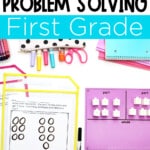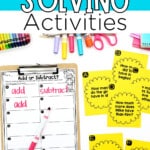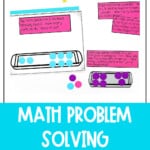


I don’t know about you guys, but teaching first grade problem solving feels like I’m basically teaching algebra. To six year olds. Problem solving is such a difficult math skill for our little learners to master! This is something we have to practice throughout the whole year.
One way I like to kick-off this unit is with Addition Allie (a superhero) and Subtraction Sammie (a villain). I make up a fun, silly story to introduce them to the class. We make anchor charts for each and add corresponding words/phrases as we go along. These make great visuals for students and a point of reference to reteach from.
I know each district tends to have its own standard model they want teachers to use to practice word problems.
I get it.
Consistency is key to learning a difficult concept that will get more complex as students get older. I wanted to share a few tips and tricks that you can use to help your students solve word problems no matter what method you use.
Before moving to the abstract, writing number sentences, it’s important that our little learners have LOTS of hands-on practice with concrete examples. This could include using manipulatives, acting the problem out, using ten frames, or using a story mat. Then it can progress to drawing pictures for the word problems. Slow and steady is the key! Don’t rush this phase of learning.
Try practicing word problems by taking out the numbers. I totally get that this sounds silly, but hear me out. Take this example: If there are — friends playing on the swings and — leave to go slide, how many are left? I would have my students “think, pair, share” to discuss a strategy to be used.
By taking away the distraction of numbers, the students can focus on the skill that leads to the answer, not just the answer. We want our kiddos to think about their thinking.
Stick to the same terms and provide plenty of opportunities for students to practice using it. This will especially be helpful for the English Language Learners in your class.
This will give you time to differentiate and assess where your students are. Remember to help students build a toolbox with a variety of strategies they can use!
I loved to introduce a concept and practice it whole group. Then, provide students with the opportunity to practice during centers. As they were doing centers, I could pull a small group and re-teach as needed to provide more scaffolding.
Do this by including names of students/teachers/staff that students know, places they’re familiar with, and using real-life examples that have happened when you create your story problems. You can also make them silly by using popular television and movie characters!
If you want a little help teaching this tough topic or just want some fresh ideas, check out my Problem Solving: Addition and Subtraction Story Problems unit HERE.
I created it to help my own little learners who struggled to master this skill, and I think it will help yours, too! It has:
I used it in both my initial teaching and in small groups to reinforce the concepts. While this unit is aligned with first grade TEKS, it can easily be used in second grade as a refresher.
Comment and let me know what your favorite tips are for teaching word problems!
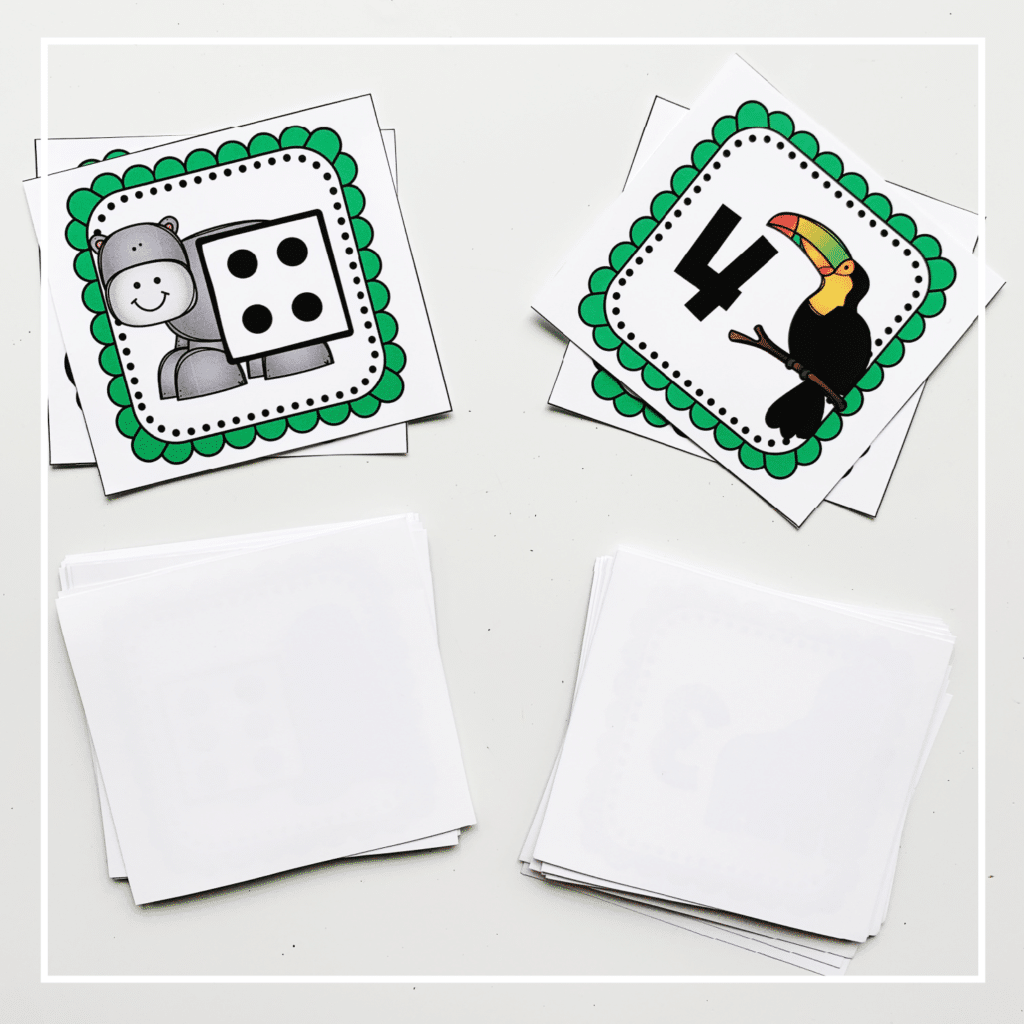

I’m a K-1 teacher who is passionate about making lessons your students love and that are easy to implement for teachers. Helping teachers like you navigate their way through their literacy block brings me great joy. I am a lifelong learner who loves staying on top of current literacy learning and practices. Here, you’ll find the tools you need to move your K-2 students forward!

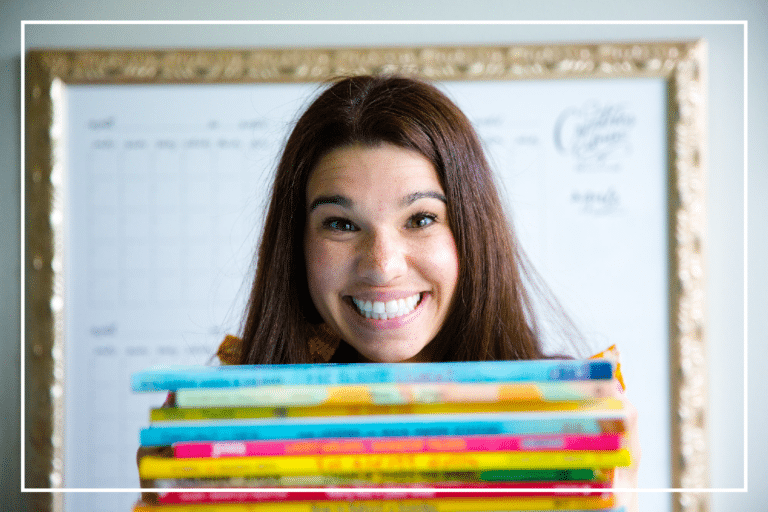
| Cookie | Duration | Description |
|---|---|---|
| cookielawinfo-checkbox-analytics | 11 months | This cookie is set by GDPR Cookie Consent plugin. The cookie is used to store the user consent for the cookies in the category "Analytics". |
| cookielawinfo-checkbox-functional | 11 months | The cookie is set by GDPR cookie consent to record the user consent for the cookies in the category "Functional". |
| cookielawinfo-checkbox-necessary | 11 months | This cookie is set by GDPR Cookie Consent plugin. The cookies is used to store the user consent for the cookies in the category "Necessary". |
| cookielawinfo-checkbox-others | 11 months | This cookie is set by GDPR Cookie Consent plugin. The cookie is used to store the user consent for the cookies in the category "Other. |
| cookielawinfo-checkbox-performance | 11 months | This cookie is set by GDPR Cookie Consent plugin. The cookie is used to store the user consent for the cookies in the category "Performance". |
| viewed_cookie_policy | 11 months | The cookie is set by the GDPR Cookie Consent plugin and is used to store whether or not user has consented to the use of cookies. It does not store any personal data. |
